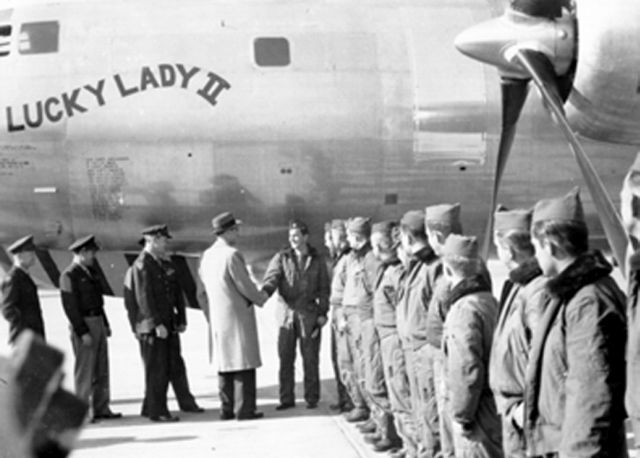
The Boeing B-50A bomber which made the flight was called Lucky Lady II. This model of bomber was very similar to the Boeing B-29, which performed the nuclear bombings of Hiroshima and Nagasaki around three and a half years earlier.
The first airplane flight around the world without stopping was performed on this day in 1949. The flight was performed by the United States Air Force (USAF) using a Boeing B-50A Superfortress bomber. The aircraft had a crew of 14, led by Captain James Gallagher.
The flight lasted a total of 94 hours and one minute, and crossed 37,742 km. The beginning and end of the flight were in the Carswell Air Force Base in Texas. Of course, such a long flight was impossible without refueling, so this was done during the flight. In fact, this had to be done on four different occasions – above the Azores, over Saudi Arabia, over the Philippines, and over Hawaii.
The Boeing B-50A bomber which made the flight was called Lucky Lady II. This model of bomber was very similar to the Boeing B-29, which performed the nuclear bombings of Hiroshima and Nagasaki around three and a half years earlier. The main difference between the B-50 and B-29 lay in their engines, since the B-50 possessed much more powerful Pratt & Whitney R-4360 Wasp Major engines. These engines were actually the most advanced piston engines in history, since all later larger aircraft used jet or turboprop engines (these were driven by turbines rather than pistons). Each of the Pratt & Whitney R-4360 Wasp Major engines contained as many as 28 cylinders arranged in a radial (star-shaped) pattern, and had around 3,000 hp. It is interesting to note that the same type of engine was installed into the huge H-4 Hercules airplane, owned by the wealthy eccentric Howard Hughes (the plane actually had eight such engines).




